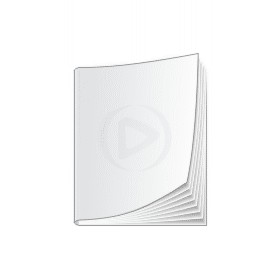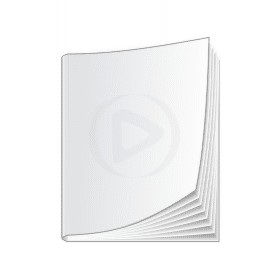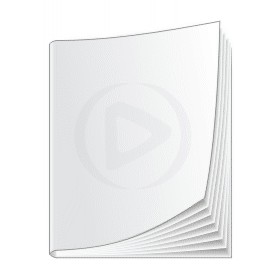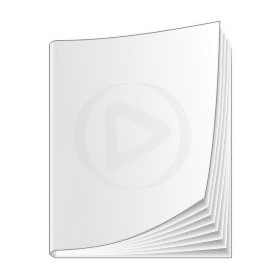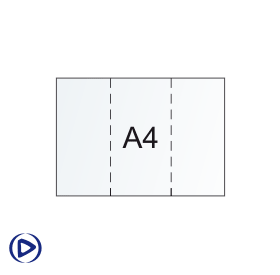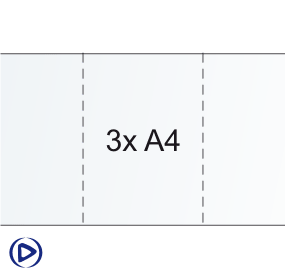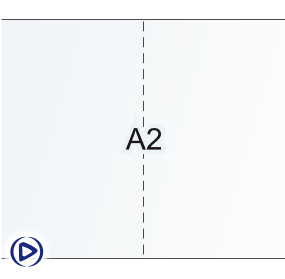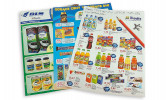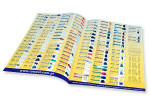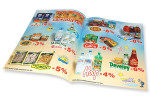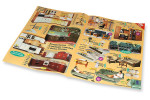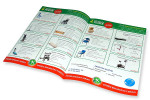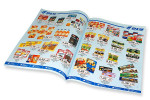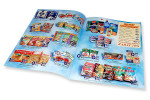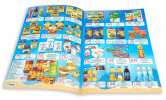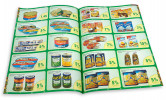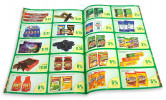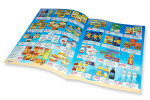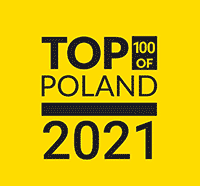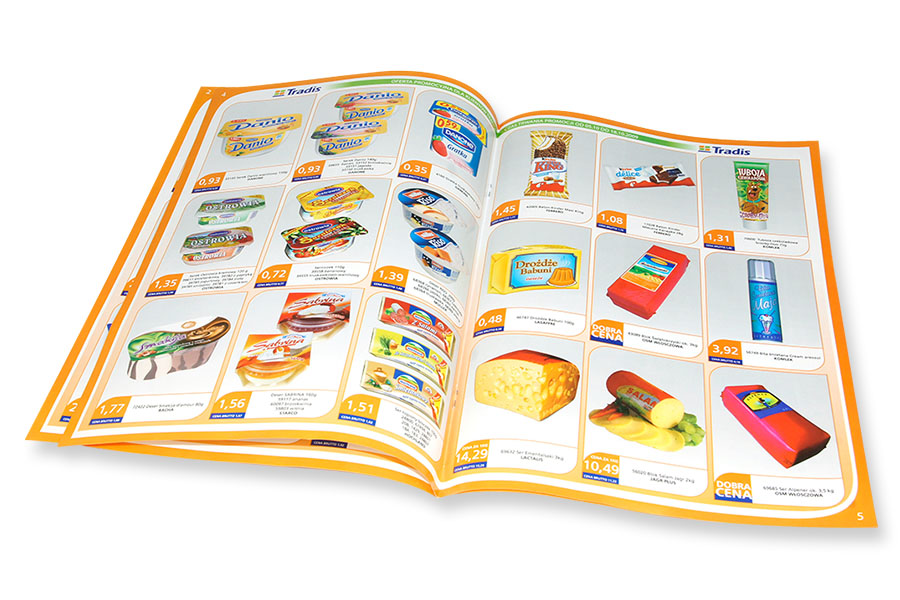 Printed advertising newsletter, stitched, 8-sided
Printed advertising newsletter, stitched, 8-sided
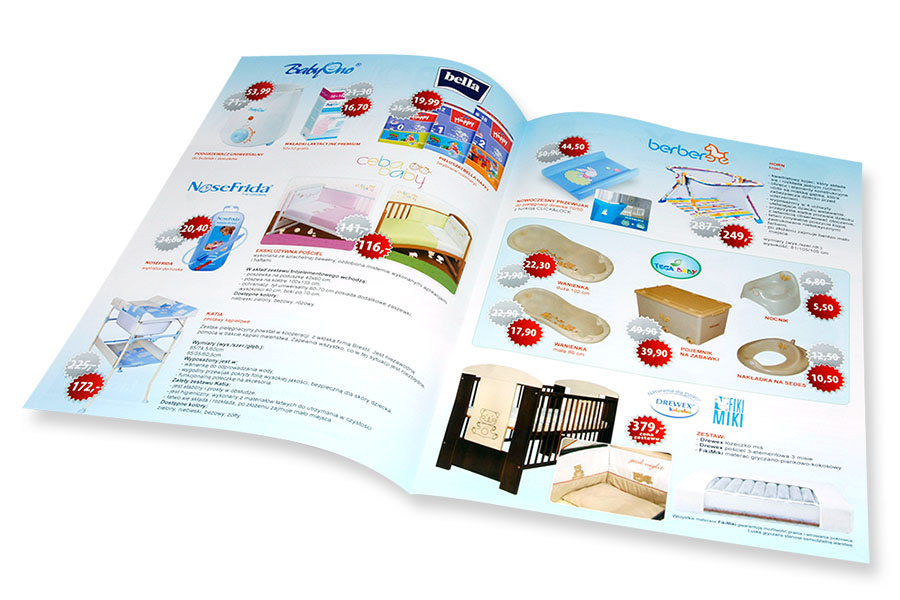 Printed advertising newsletter, 4-sided
Printed advertising newsletter, 4-sided
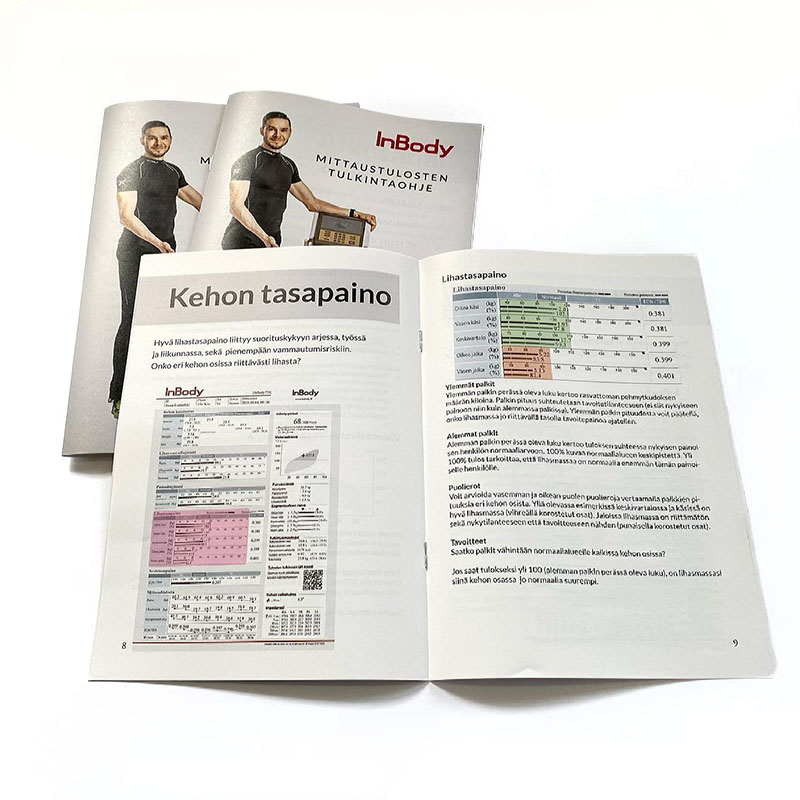 Multi-sided newsletters sewn with wire, printed on 65g One Bulk wood paper
Multi-sided newsletters sewn with wire, printed on 65g One Bulk wood paper
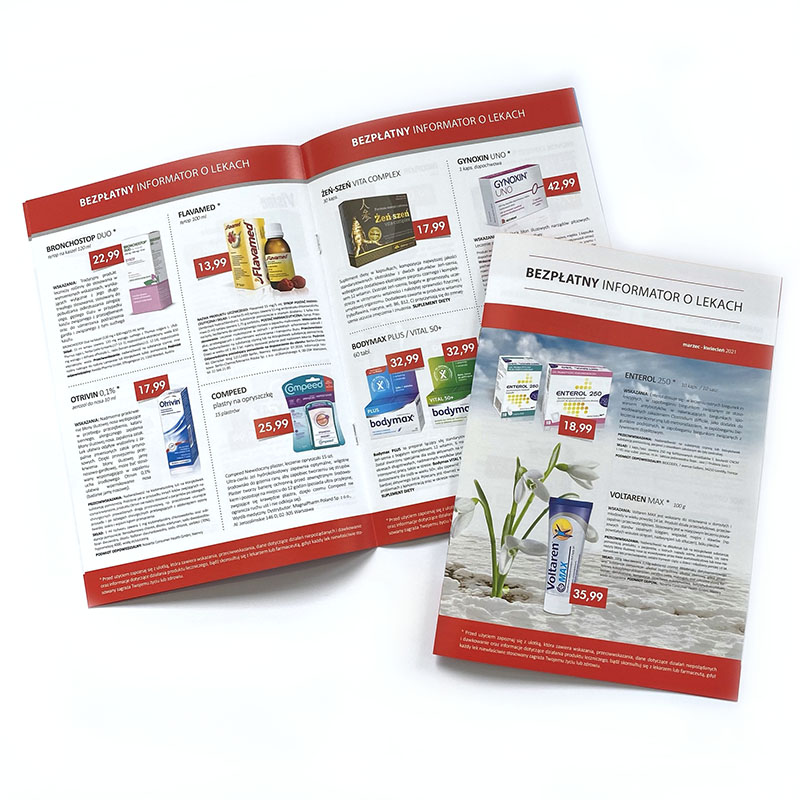 Multi-sided leaflets sewn with wire, printed on matte coated woodfree paper 135g
Multi-sided leaflets sewn with wire, printed on matte coated woodfree paper 135g


Advertising newsletters
✔ food ✔ furniture ✔ clothing ✔ agd-tv ✔ pharmacy
Generally about newsletters
Advertising newsletters are indispensable for any promotional campaigns advertising selected products from the offer, as well as for periodically informing the customer about changes in the permanent offer.
How to prepare a graphic design for printing a newsletter?
The graphic design of the newsletter should be prepared in a size compatible with the model of the ordered product. The mockup for the project and its description are available on the left side of the product configurator. Deliver your print-ready design in PDF X-3 format (check PDF export options in your application). When designing, we recommend keeping margins of at least 3 mm and, in the case of a background other than white, bleed for 2 mm (the format increased by 2 mm on each side). Do not combine the pages into the folds, thus creating a document with a double page size, because the automatic preview will be generated incorrectly. PDF should be saved in CMYK color space, and black text should be black only (C0 M0 Y0 K100)
What substrates are used for printing newsletters?
The type of substrate used is an important issue in printing newsletters. In the case of distribution, the weight of the newspaper is often limited to a specific weight, in this case the weight of the product should be checked against the selected type of paper.
The lightest paper in the offer is coated wood paper with a weight of 65g One Bulk 1.14 which in our configurator is the default paper.
One Bulk 1.14 65g is a high-quality double-sided coated matte wood paper with high volume and opacity. One Bulk wood paper has special features that result in a good quality product. Despite its low grammage, its opacity parameters and thicknesses are similar to those of coated wood-free (chalked) papers with much higher grammages. This paper, due to its low basis weight and thus favorable price per sheet, is an excellent choice for the production of multi-page newspapers in large volumes (tens of thousands of pieces). By using 65g wood paper, which is fluff paper, we get a lower weight of the newspaper, a better price of the product and a quality effect similar to the much more expensive and heavier 115g wood-free coated paper.
Another paper very popular in the production of low-circulation newspapers (up to several thousand pieces) is wood-free (chalked) coated 115 - 135g matt or glossy paper. This type of paper is commonly found in advertising flyers and folders. Due to the high quality of whiteness and the quality of the surface finish, it ensures the highest print quality.
To sum up:
If the circulation of newsletters is low and the weight of the newsletter is not limited , usually 115g coated cellulose paper is selected.
If the circulation of newsletters is high and / or the low weight is limited , then 65g coated wood paper should be used
Comparison table of Novatech (woodfree) and One Bulk (wood) papers
| The name of the paper | Grammage (g / m²) | Opacity (%) | Whiteness (CIE) | Thickness (µm) |
| Uncoated Speed-E | 80 | 89 | 146 | 101 |
| Uncoated Speed-E | 90 | 91 | 146 | 111 |
| Uncoated Speed-E | 100 | 91 | 146 | 124 |
| Glossy coated Novatech | 115 | 94.5 | 125 | 85 |
| Glossy coated Novatech | 135 | 95 | 125 | 100 |
| Matte coated Novatech | 115 | 95 | 100 | 97 |
| Matte coated Novatech | 135 | 96.5 | 100 | 117 |
| Coated, woody One Bulk 1.14 | 65 | 95 | 87 | 74 |
| Coated, woody Sol Plus 1.2 | 80 | 96 | 94 | 96 |
| Coated, woody Sol Plus 1.2 | 90 | 97 | 94 | 108 |
| Uncoated Ecco Book 1.4 | 60 | 94 | 80 | 84 |
| Uncoated Ecco Book 1.6 | 70 | 97 | 80 | 112 |
| Uncoated Ecco Book Cream 2.0 | 60 | 92 | 73.5 | 120 |
| Uncoated Ecco Book Cream 2.0 | 70 | 93 | 73.5 | 140 |
| Uncoated Ecco Book Cream 2.0 | 80 | 94 | 73.5 | 160 |
| Uncoated Ecco Book Cream 2.0 | 90 | 94 | 73.5 | 180 |
How are the newsletters printed?
The leaflets are printed on an industrial Heidelberg sheetfed machine in full color in the Euroscale (CMYK) standard at a high resolution of 2400 DPI using a hybrid screen. Colors in print are densitometrically controlled to an ISO standard appropriate for the printing substrate used.
What are the binding / finishing methods for the magazine?
We distinguish three types of leaflets:
- simple double-sided newsletters
- multi-page folded newsletters
- multi-page stitched newsletters
Multi -page newsletters can be made in a stapled or folded (folded) form
We distinguish the following ways of folding leaflets, such as:
- folding in half
- submission to C
- folding in Z (zigzag)
- cross folding
The folded form is less time-consuming to manufacture and thus more attractive in terms of price compared to the sewn binding.
If you have additional questions
Please contact us about the newsletters printed in our company.Drukarnia Gazetek "Designer" is waiting for your questions from 8 am to 8 pm.

